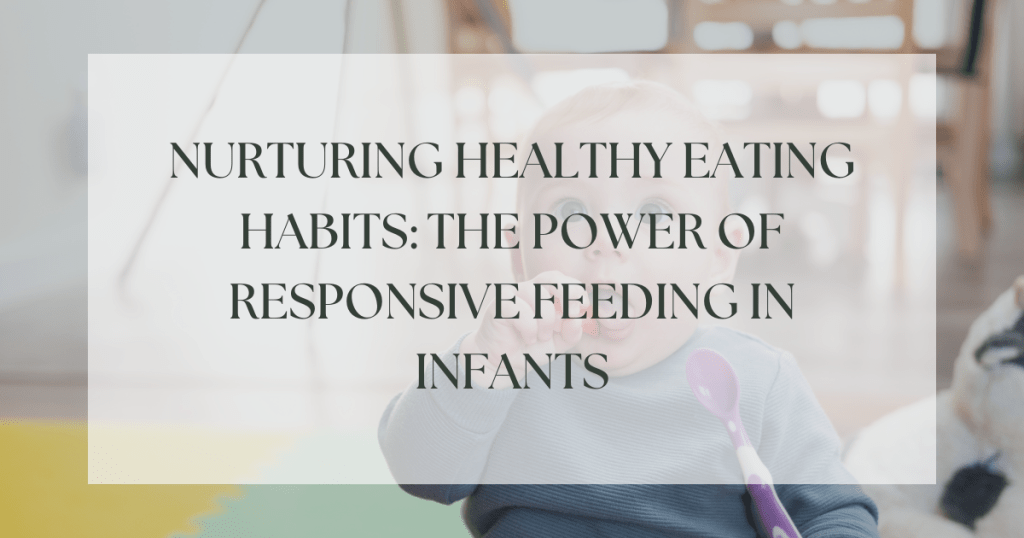As parents, we want to lay the foundation for a healthy relationship with food for our children from the very beginning. Responsive feeding, an approach that honours a baby’s hunger and fullness cues, is key to fostering healthy eating habits and promoting a positive connection with food. In this blog post, we will explore the importance of responsive feeding in infants, discuss its benefits, and provide practical tips on implementing this approach, whether you choose to practice baby-led weaning, introduce purees, or opt for a combination of both.
Understanding Responsive Feeding
Responsive feeding is a feeding approach that acknowledges an infant’s cues for hunger and fullness, allowing them to guide their own intake. It involves being attuned to your baby’s signals and offering appropriate feeding opportunities in a supportive and nurturing environment. This approach empowers your baby to develop self-regulation and a healthy appetite.
The Division of Responsibility
The Division of Responsibility is a framework developed by feeding expert Ellyn Satter, which outlines the roles of parents and children in feeding dynamics. According to this approach, parents are responsible for what, when, and where to eat, while children are responsible for how much and whether to eat. This division empowers children to develop a healthy relationship with food and supports their intuitive eating abilities.
Honouring Hunger Cues
Recognizing and responding to your baby’s hunger cues is crucial in establishing a positive relationship with food. Signs of hunger include increased alertness, sucking motions, rooting, and hand-to-mouth movements. When you observe these cues, offer a feeding opportunity, whether through breast or bottle feeding, or introducing solid foods.
Introducing Baby-Led Weaning
Baby-led weaning is a method of introducing solid foods that allows babies to explore and self-feed age-appropriate foods from the start. By offering a variety of nutrient-rich finger foods, you can support your baby’s motor development, sensory exploration, and self-regulation of food intake. Allow your baby to take the lead and decide how much to eat.
Incorporating Purees and Traditional Feeding
If you choose to introduce purees or follow a more traditional feeding approach, it is still essential to practice responsive feeding. Pay attention to your baby’s cues during spoon-feeding, such as turning their head away or closing their mouth when full. Avoid pressuring your baby to finish a specific amount and respect their preferences.
Creating a Positive Mealtime Environment
Establish a positive mealtime environment that promotes exploration, enjoyment, and social interaction. Offer a variety of textures, flavours, and colours to encourage your baby’s curiosity. Allow them to touch, smell, and taste foods at their own pace. Make mealtimes a pleasant and relaxed experience, free from distractions.
Patience and Persistence
Responsive feeding is a learning process for both you and your baby. Be patient and persistent, as it takes time for infants to develop their eating skills and preferences. Offer a variety of foods, including those initially rejected, as taste preferences can change over time. Encourage self-feeding and continue to respond to your baby’s cues as they grow.
Responsive feeding is a powerful approach to nurturing healthy eating habits in infants. By honouring your baby’s hunger cues, practicing self-regulation, and creating a positive mealtime environment, you lay the groundwork for a lifelong positive relationship with food. Whether you choose baby-led weaning, purees, or a combination of both, remember that the key is to follow your baby’s lead, respect their cues, and support their development. Embrace the joy and exploration of feeding, knowing that you are nourishing your child’s body and fostering a healthy attitude towards food.


